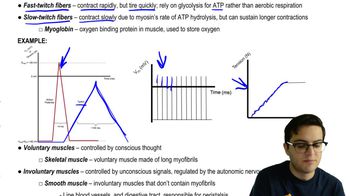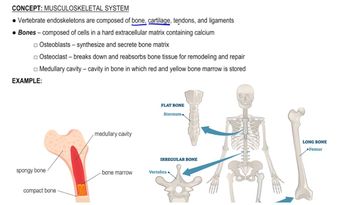Table of contents
- 1. Introduction to Biology2h 42m
- 2. Chemistry3h 40m
- 3. Water1h 26m
- 4. Biomolecules2h 23m
- 5. Cell Components2h 26m
- 6. The Membrane2h 31m
- 7. Energy and Metabolism2h 0m
- 8. Respiration2h 40m
- 9. Photosynthesis2h 49m
- 10. Cell Signaling59m
- 11. Cell Division2h 47m
- 12. Meiosis2h 0m
- 13. Mendelian Genetics4h 44m
- Introduction to Mendel's Experiments7m
- Genotype vs. Phenotype17m
- Punnett Squares13m
- Mendel's Experiments26m
- Mendel's Laws18m
- Monohybrid Crosses19m
- Test Crosses14m
- Dihybrid Crosses20m
- Punnett Square Probability26m
- Incomplete Dominance vs. Codominance20m
- Epistasis7m
- Non-Mendelian Genetics12m
- Pedigrees6m
- Autosomal Inheritance21m
- Sex-Linked Inheritance43m
- X-Inactivation9m
- 14. DNA Synthesis2h 27m
- 15. Gene Expression3h 20m
- 16. Regulation of Expression3h 31m
- Introduction to Regulation of Gene Expression13m
- Prokaryotic Gene Regulation via Operons27m
- The Lac Operon21m
- Glucose's Impact on Lac Operon25m
- The Trp Operon20m
- Review of the Lac Operon & Trp Operon11m
- Introduction to Eukaryotic Gene Regulation9m
- Eukaryotic Chromatin Modifications16m
- Eukaryotic Transcriptional Control22m
- Eukaryotic Post-Transcriptional Regulation28m
- Eukaryotic Post-Translational Regulation13m
- 17. Viruses37m
- 18. Biotechnology2h 58m
- 19. Genomics17m
- 20. Development1h 5m
- 21. Evolution3h 1m
- 22. Evolution of Populations3h 52m
- 23. Speciation1h 37m
- 24. History of Life on Earth2h 6m
- 25. Phylogeny2h 31m
- 26. Prokaryotes4h 59m
- 27. Protists1h 12m
- 28. Plants1h 22m
- 29. Fungi36m
- 30. Overview of Animals34m
- 31. Invertebrates1h 2m
- 32. Vertebrates50m
- 33. Plant Anatomy1h 3m
- 34. Vascular Plant Transport1h 2m
- 35. Soil37m
- 36. Plant Reproduction47m
- 37. Plant Sensation and Response1h 9m
- 38. Animal Form and Function1h 19m
- 39. Digestive System1h 10m
- 40. Circulatory System1h 57m
- 41. Immune System1h 12m
- 42. Osmoregulation and Excretion50m
- 43. Endocrine System1h 4m
- 44. Animal Reproduction1h 2m
- 45. Nervous System1h 55m
- 46. Sensory Systems46m
- 47. Muscle Systems23m
- 48. Ecology3h 11m
- Introduction to Ecology20m
- Biogeography14m
- Earth's Climate Patterns50m
- Introduction to Terrestrial Biomes10m
- Terrestrial Biomes: Near Equator13m
- Terrestrial Biomes: Temperate Regions10m
- Terrestrial Biomes: Northern Regions15m
- Introduction to Aquatic Biomes27m
- Freshwater Aquatic Biomes14m
- Marine Aquatic Biomes13m
- 49. Animal Behavior28m
- 50. Population Ecology3h 41m
- Introduction to Population Ecology28m
- Population Sampling Methods23m
- Life History12m
- Population Demography17m
- Factors Limiting Population Growth14m
- Introduction to Population Growth Models22m
- Linear Population Growth6m
- Exponential Population Growth29m
- Logistic Population Growth32m
- r/K Selection10m
- The Human Population22m
- 51. Community Ecology2h 46m
- Introduction to Community Ecology2m
- Introduction to Community Interactions9m
- Community Interactions: Competition (-/-)38m
- Community Interactions: Exploitation (+/-)23m
- Community Interactions: Mutualism (+/+) & Commensalism (+/0)9m
- Community Structure35m
- Community Dynamics26m
- Geographic Impact on Communities21m
- 52. Ecosystems2h 36m
- 53. Conservation Biology24m
47. Muscle Systems
Musculoskeletal System
Problem 16f`
Textbook Question
Distance runner Paula Radcliffe has won dozens of long-distance races and held the women's world record for the marathon since 2003. Scientists, trainers, and athletes alike have wondered about the extent to which muscle structure and function contribute to success in athletes such as Radcliffe.
What makes elite distance runners so good?
Are their muscles somehow different from those of less successful athletes and non-athletes?
Imagine that Paula Radcliffe is racing against a bird and a fish, each with the same mass as Paula. Which organism would have the highest cost of locomotion during the race?
 Verified step by step guidance
Verified step by step guidance1
Understand the concept of cost of locomotion, which refers to the energy expenditure required for an organism to move a certain distance. It varies among different species and modes of locomotion.
Consider the different modes of locomotion: running for Paula Radcliffe, flying for the bird, and swimming for the fish. Each mode has different energy efficiencies.
Recognize that generally, flying is more energy-efficient than running, and swimming is often more energy-efficient than both running and flying, especially over long distances.
Analyze the energy expenditure per unit mass for each organism. Birds typically have a lower cost of locomotion due to the efficiency of flight, while fish can be even more efficient due to buoyancy reducing the energy needed to overcome gravity.
Conclude that, given the same mass, the organism with the highest cost of locomotion is likely to be the human runner, Paula Radcliffe, due to the relatively higher energy demands of running compared to flying and swimming.
 Verified video answer for a similar problem:
Verified video answer for a similar problem:This video solution was recommended by our tutors as helpful for the problem above
Video duration:
2mPlay a video:
Was this helpful?
Key Concepts
Here are the essential concepts you must grasp in order to answer the question correctly.
Muscle Structure and Function
Muscle structure and function are critical in determining athletic performance. Muscles are composed of fibers that contract to produce movement, and their efficiency can vary based on fiber type composition. Fast-twitch fibers are suited for quick, powerful bursts, while slow-twitch fibers are more efficient for endurance activities. Elite distance runners often have a higher proportion of slow-twitch fibers, which enhances their endurance capabilities.
Recommended video:
Guided course

Functional Groups
Cost of Locomotion
The cost of locomotion refers to the energy expenditure required for an organism to move a certain distance. It varies among species due to differences in body structure, metabolism, and mode of movement. Generally, running is more energetically expensive than flying or swimming, as it involves overcoming gravity with each step. Therefore, understanding the cost of locomotion helps in comparing the energy efficiency of different organisms during movement.
Recommended video:
Guided course

Muscle System and Skeleton
Comparative Physiology
Comparative physiology examines how different organisms perform similar functions, such as movement, and how these functions are adapted to their environments. By comparing a human, bird, and fish, we can explore how each has evolved to optimize energy use in their respective modes of locomotion: running, flying, and swimming. This field helps explain why certain species are more efficient in specific environments, providing insights into the evolutionary adaptations that enhance performance.
Recommended video:
Guided course

Heart Physiology

 2:08m
2:08mWatch next
Master Muscle System and Skeleton with a bite sized video explanation from Jason
Start learningRelated Videos
Related Practice




















































